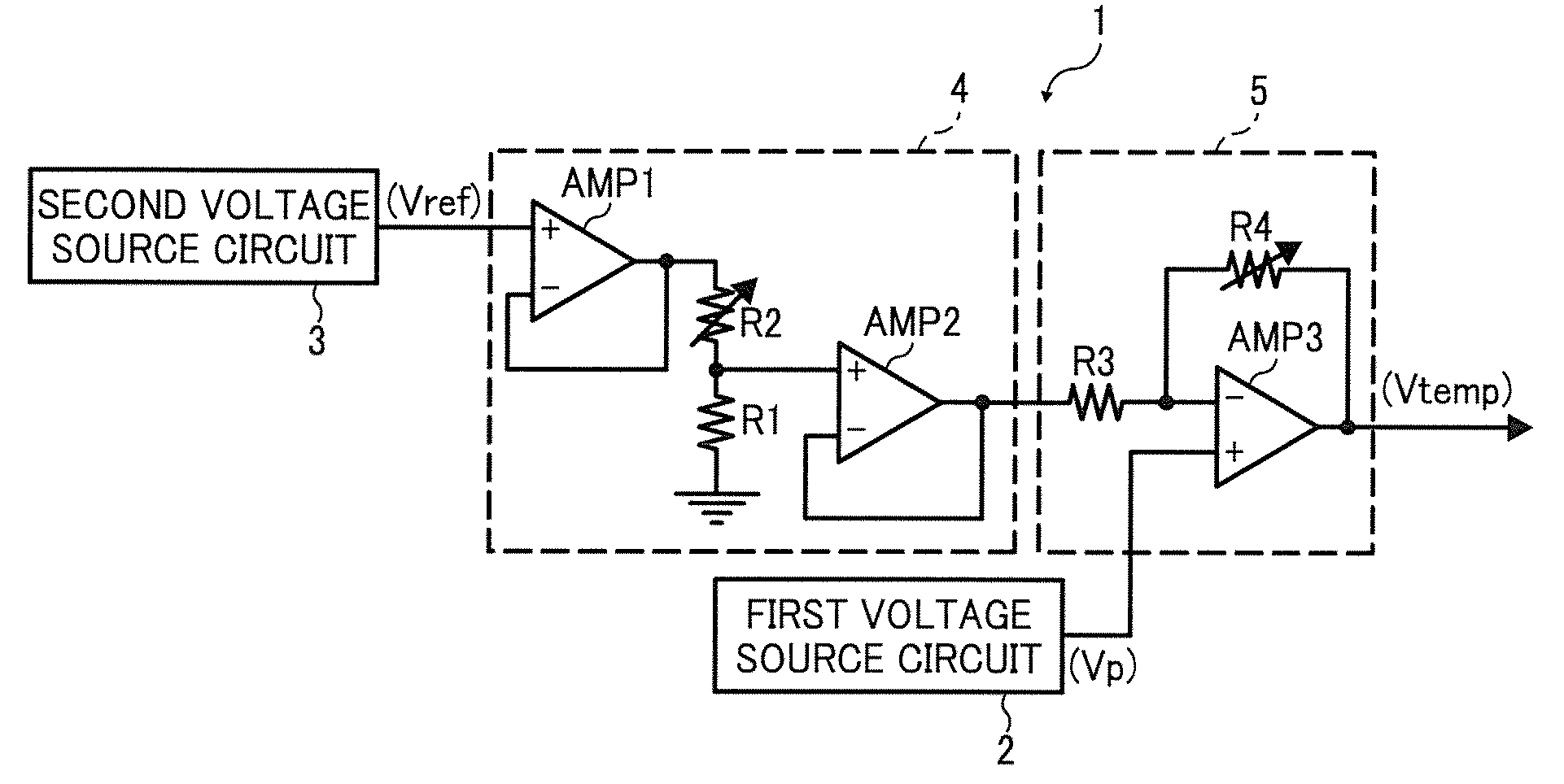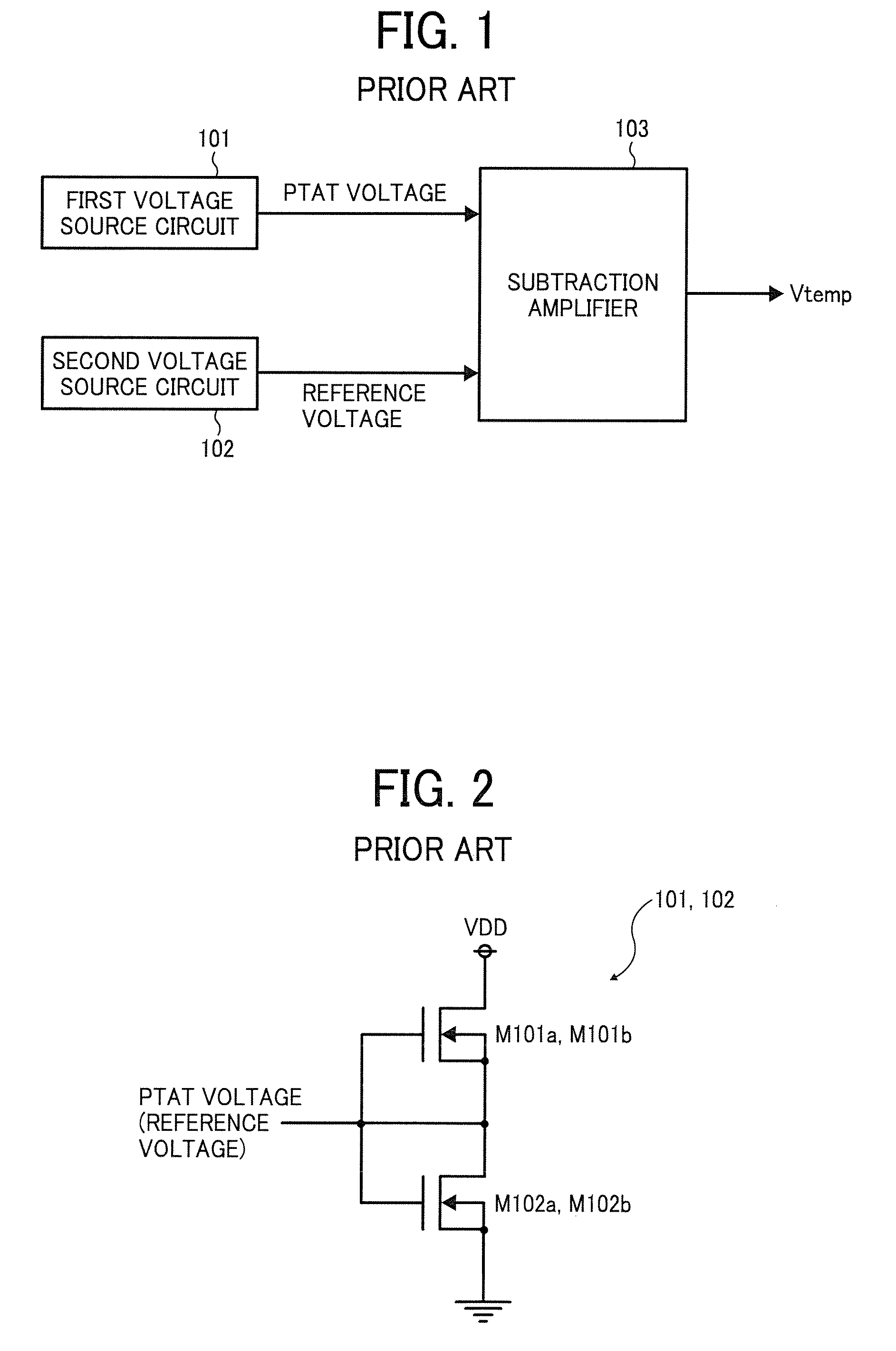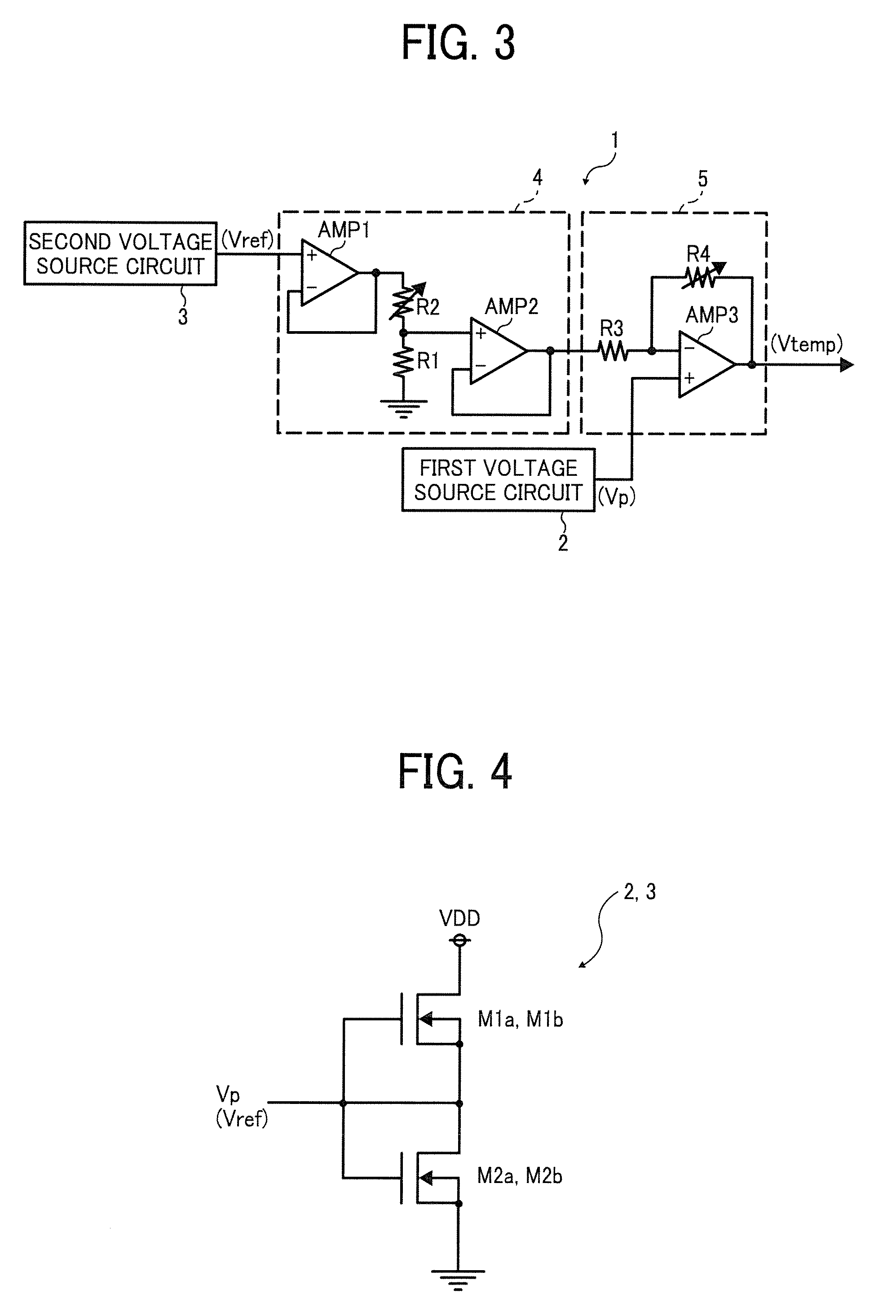Temperature detection circuit
a technology of temperature detection and circuit, applied in the direction of instruments, heat measurement, calorimeters, etc., can solve the problem of not being able to accurately detect the ambient temperature around the devi
- Summary
- Abstract
- Description
- Claims
- Application Information
AI Technical Summary
Benefits of technology
Problems solved by technology
Method used
Image
Examples
first example embodiment
[0030]FIG. 3 is an example circuit of a temperature detection circuit according to a first example embodiment. In FIG. 3, the temperature detection circuit 1 includes a first and second voltage sources 2 and 3, a correction circuit 4, and an subtraction amplifier circuit 5. The first voltage source circuit 2 generates a positive PTAT voltage Vp having a negative temperature dependence by utilizing a work function difference of gate electrodes of two field effect transistors.
[0031]The second voltage source circuit 3 generates a reference voltage Vref having no temperature dependence using a work function difference of gate electrodes of two field effect transistors. The correction circuit 4 corrects the reference voltage Vref output from the second voltage source circuit 3, and outputs a corrected reference voltage Vref. The subtraction amplifier circuit 5 subtracts the reference voltage Vref output from second voltage source circuit 3 from the PTAT voltage Vp output from the first v...
second example embodiment
[0059]In the temperature detection circuit according to the first example embodiment, the temperature detection circuit outputs an analog signal. In a second example embodiment, a temperature detection circuit outputs a digital signal.
[0060]FIG. 7 is a circuit diagram of the temperature detection circuit according to the second example embodiment. In FIG. 7, identical reference characters are assigned to identical or similar circuit members shown in FIG. 3 and descriptions thereof are omitted.
[0061]The temperature detection circuit 10 outputs a digital signal which is in directly proportional to temperature T as a line shown in FIG. 8, and a coefficient of the line is determined to be “16”. A digital value of “0” is output at 0° C., therefore, the temperature detection circuit 10 has a resolution of 0.0625° C.
[0062]The temperature detection circuit 10 includes a first and second voltage source circuits 2 and 3, an subtraction amplifier circuit 5, a switch 12, a double integration A / ...
PUM
| Property | Measurement | Unit |
|---|---|---|
| temperature | aaaaa | aaaaa |
| work function | aaaaa | aaaaa |
| reference voltage | aaaaa | aaaaa |
Abstract
Description
Claims
Application Information
 Login to View More
Login to View More - R&D
- Intellectual Property
- Life Sciences
- Materials
- Tech Scout
- Unparalleled Data Quality
- Higher Quality Content
- 60% Fewer Hallucinations
Browse by: Latest US Patents, China's latest patents, Technical Efficacy Thesaurus, Application Domain, Technology Topic, Popular Technical Reports.
© 2025 PatSnap. All rights reserved.Legal|Privacy policy|Modern Slavery Act Transparency Statement|Sitemap|About US| Contact US: help@patsnap.com



